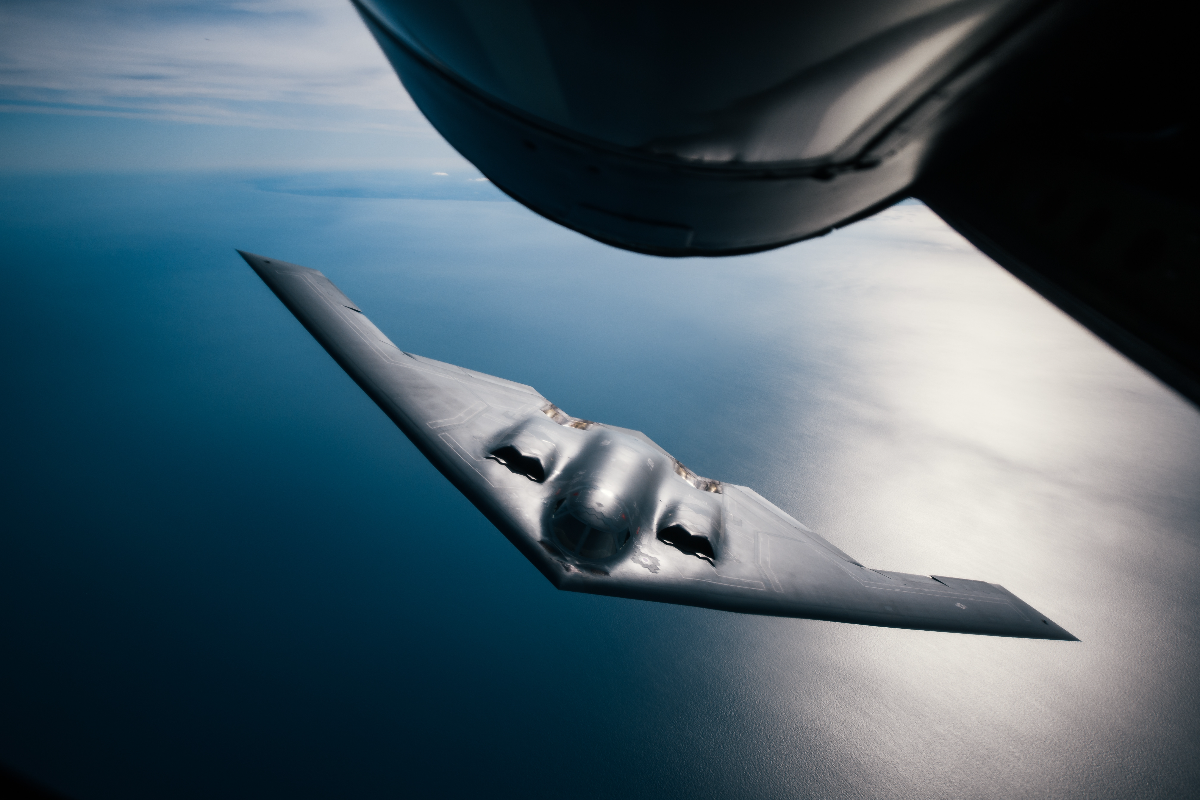Summary The B-2 Spirit, with only 21 built, pioneered the flying wing design and remains in service today. The F-117 Nighthawk, produced in the 1980s, was the world's first manned stealth aircraft. The Boeing X-32 lost the competition to the Lockheed Martin X-35, which led to the F-35 program.
Arguably, the era of the strangest aircraft designs took place at the beginning of aviation—this was when people were experimenting to find out what aircraft shapes worked. Arguably, none of these designs were unconventional, as convention had not yet been established. Another period of strange aircraft design happened during and after WWII with designs like the Convair XFY-1 Pogo .

Some unconventional designs never got past the experimental stage, while others, like the B-2 Spirit 'flying wing', have become the standard for stealth design . 1 Northrop Grumman B-2 Spirit 21 B-2 Spirits were built First flew: 1989 Noted for: Pioneering flying wing design Outcome: Serial production, early production cancelation, remains in service When the B-2 Spirit was first developed, it was an unconventional design - at least for manned aircraft. Only 21 B-2s were ever built; today, 19 remain in service (two have been lost to accidents).
The B-2 Spirit remains the world's only flying wing and stealthy bomber in service (although many stealth drones now use the flying wing design ). If the B-2 Spirit's design was unconventional when it was first made, it has now become the conventional design for stealth bombers. The US Air Force's new bomber - the B-21 Raider, now in low-rate production - has the same design, while the Chinese Xi'an H-20 stealth bomber under development is also believed to be a flying wing design.
2 Lockheed Martin F-117 Nighthawk 64 F-117 Nighthawks were produced First flew: 1981 Noted for: Diamond-shaped stealth design Outcome: Serial production and service, now quasi-retired The F-117 Nighthawk is regarded as the world's first manned stealth aircraft. It was more of a bomber than a fighter. Produced in the 1980s, it was a pioneer of stealth design.
Its shape was revolutionary and unmistakable. It was produced as a Black Project by Lockheed's Skunk Works, and the Air Force denied its existence for many years before the service finally acknowledged its existence. The F-117 Nighthawk reminded the world that stealth designs are difficult to see - but they are not invisible, and no platform is invincible.
The Nighthawks were used in bombing raids over Serbia, and one was shot down (in a lucky shot) by an aging air defense system . Additionally, it is believed the Serbs hit a second Nighthawk on a separate occasion, but that aircraft managed to land on one engine. Since entering service with the USAF in 1983, only one F-117 has ever been shot down.
3 Boeing X-32 One Boeing X-32 prototype was built First flew: 2000 Noted for: Large front intake Outcome: Lost the competition It is sometimes suggested that part of the reason why Lockheed Martin's X-35 won the contract for the F-35 stealth fighter program was because its rival, the Boeing X-32, was ugly. The Boeing X-32 was a prototype for the Joint Strike Fighter program and is noted for its distinctive delta wing and large intake. The X-32 made its first flight in September 2000 and went on to make 66 flights during the four months of testing.
The flights demonstrated the prototype's capabilities for in-flight refueling, supersonic flight, and weapons bay operations. After losing the competition, the prototype was eventually moved to the National Museum of the United States Air Force . The fighter jet demonstrator has been given a new lease of life.
4 Grumman X-29 2 experimental Grumman X-29s were built First flew: 1984 Noted for: Forward swept wings Outcome: Retired after testing Sometimes, genius comes with challenging conventional designs. All aircraft have either straight or backward-swept wings - but what if an aircraft had forward-swept wings? The Grumman X-29 was an attempt to experiment with forward-swept wings and canards so that unconventional aerodynamic configurations could be tested. The airframe's aerodynamic instability required computerized fly-by-war controls (fighter jets are built to be unstable).
The Russians went on to build their own very similar-looking forward-swept-wing experimental aircraft, the Sukhoi Su-47 Berkut (one was built, and it first flew in 1997 before being canceled by the Russians). This is perhaps the most funny aircraft design you have ever seen. 5 Vought V-173 "Flying Pancake" One experimental Flying Pancake was built First flight: 1942 Noted for: Circular pancake design Outcome: Retired and abandoned The Vought V-173 "Flying Pancake" was an experimental circular wing design intended as a proof of concept for extreme short takeoffs.
It is a great example of unorthodox and out-of-the-box thinking by American engineering during World War II. The aircraft had two piston engines buried in the body and propellers on the leading edge at the wingtips. The Air And Space Museum recounts, " Its designer, Charles Zimmerman, reasoned that the drag, which is created by disturbed airflow near the tip of conventional wings, would be minimized by placing the propeller at the wing tip.
By maintaining a uniform flow over the entire span, he felt that it could take off and land at exceptionally low speeds and still have good high-speed performance. " The prospect of realizing these qualities was extremely appealing to the Navy, which needed to operate aircraft off its aircraft carriers..



















